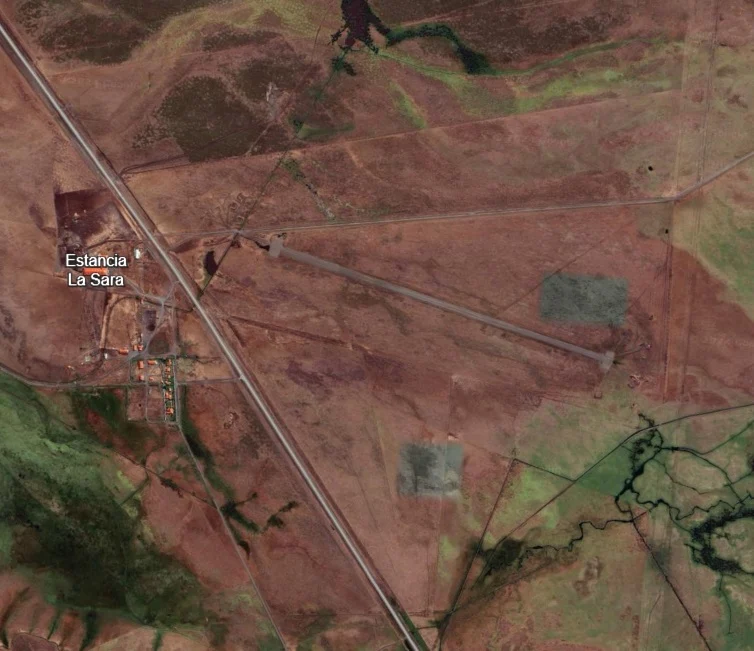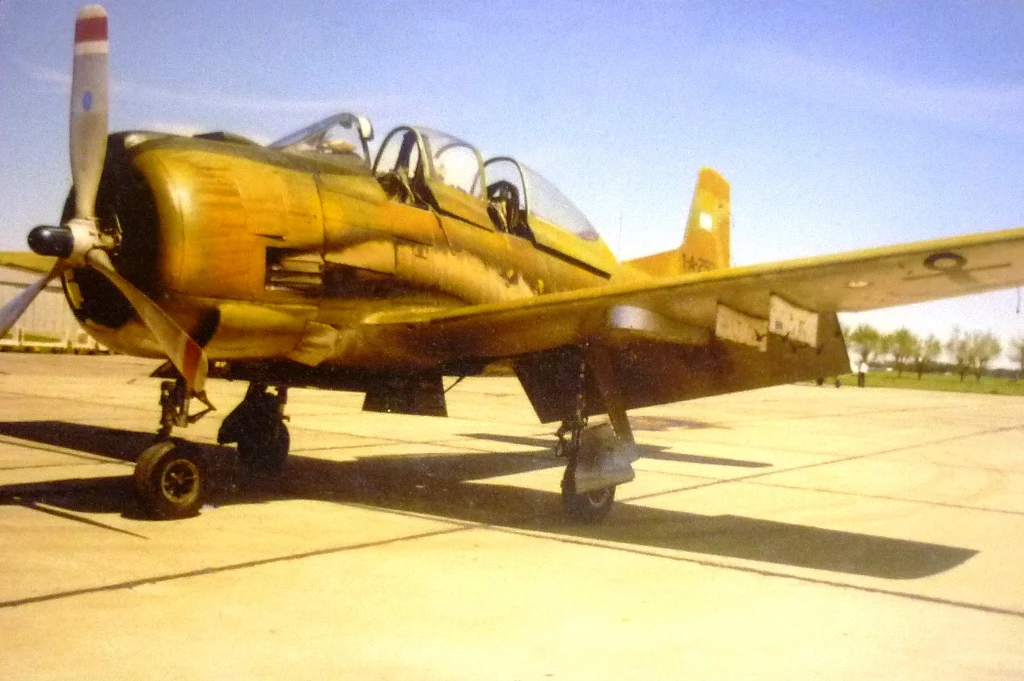Naval Aviation School in Operation Tronador
On the last week of August, 2024, news broke of a scramble (a priority emergency takeoff of an interceptor fighter to respond to an immediate threat) involving two FACh F-5E Tiger III aircraft to identify an "unknown threat" at the mouth of the Strait of Magellan. The jets found nothing, but they had taken off from Chabunco Air Base (Presidente Carlos Ibáñez International Airport) in Punta Arenas. In 1978, during the Beagle crisis, this airport would have been a target in an operation aimed at neutralizing the main Chilean aircraft operating in the area: the Hawker Hunters. This daring mission was assigned to a fleet of T-28 Fennec aircraft, rugged, radial-engine, two-seat trainers and light attack planes from the Argentine Navy's Aviation Command. Hidden at a dispersal airstrip 50 km from Río Grande, these aircraft were tasked with supporting the helicopter-borne landing on the disputed islands and sinking small vessels. Their most daring mission: attacking the Hunters as they were preparing to land. Let's delve into this fascinating story.
The Naval Aviation School Goes to War
At the end of 1977, the Naval Aviation School had a small number of only nine T-28 aircraft in service, out of a total of 20 assigned. During that period, the last navigation of these aircraft between Punta Indio and Ushuaia was planned, called "Operation Austral," which involved the transfer of the nine operational aircraft at that time.
T-28P 0628/3-A-208. B.A Ushuaia, August 11. Pilot Midshipman Goñi, and Second Warrant Officer Ruiz.
1.2km dispersal runway at Estancia La Sara where the T-28 Fennec operated
Initially conceived as the farewell of these aircraft, the mission unintentionally became the prelude to Operation Tronador for the School. Given the growing tension in the Austral Zone, the Naval Aviation Command (COAN) was instructed to increase the level of readiness due to the possible occurrence of an armed conflict. As part of these measures, the deactivation of the T-28s was suspended.
T-28F 0581/1-A-250 during a stopover at Tandil Air Base on the way to Rio Grande Air Station.
In early 1978, a four-plane division from the Naval Aviation School was deployed to the Río Grande Naval Air Base, where it remained for the entire year, with the planes being replaced periodically.
As tensions increased in November, the Naval Aviation School Squadron reached a total of 19 T-28s in operational condition, with the number of available pilots also increasing. Lieutenant Hugo Ortiz was put in charge of the group, which consisted of several officers.
B-80 used as support of the Fennec deployment
In the framework of Operation Tronador, the T-28 Squadron was assigned close air support missions, attacks on smaller vessels in Bahía Inútil, and the risky task of attacking Chilean Air Force Hunter aircraft during their landing phase in Punta Arenas. Shooting practice, rocket attacks, and 30º bombings were carried out, usually in cooperation with troops from the 5th Marine Infantry Battalion (BIM-5). A forward operating base was established on the runway of the "La Sara" ranch, where a division of T-28s was kept on permanent readiness, while the rest were concentrated in Río Grande.
Photo taken by Frigate Lieutenant Urberti to Midshipman Goñi on board T-28P 0588/3-A-203.
The small painted feature on the camouflaged T-28s can be seen. Estancia La Sara, Dec. 1978.
During this period, reconnaissance flights were carried out, including over Chilean airspace. On one of these flights, on August 13, 1978, a section of T-28s discovered a field airfield with troops and a C-47 of the Chilean Air Force, just 15 miles northwest of the "La Sara" ranch.
Dispersal airstrips of the FACH and the COAN in the northern area of Tierra del Fuego
Finally, shortly before December 22, the readiness was completed and the squadron awaited attack orders, which never came. The T-28 squadron was one of the last to withdraw, doing so on January 27, 1979, flying from La Sara to Punta Indio. Despite the precarious operating conditions and the wear and tear of the aircraft, no major inconveniences were recorded. In June 1979, the last T-28Fs were decommissioned and scrapped.
Wrecks of the T-28F of the ESAN (Naval Aviation School)
The region covered by history can be seen on this map below. From the improvised runway at Estancia La Sara, a direct route of 185 km was to be flown to carry out an attack on the Chabunco air base and a 100 km route to patrol and harass ships in Bahía Inútil. The runway is located about 50 km NNW of Río Grande, where another section of ESAN T-28 Fennecs operated. Finally, from the runway to Ushuaia there are only 155 km.
Conclusions
In the vast expanse of southern Argentina, amidst the frigid and desolate region of Tierra del Fuego, the brave pilots and instructors of the Naval Aviation School prepared for the unimaginable. Aboard their sturdy and rugged T-28 Fennecs—aircraft considered obsolete by many—these men not only faced the challenge of operating under the most extreme conditions, but did so with a boldness that continues to inspire admiration to this day.
As the tension of the Beagle crisis reached its peak, these pilots were entrusted with a mission that seemed straight out of an epic tale: to strike the formidable Chilean Hawker Hunters just as they were landing in Punta Arenas. Imagine the courage required to confront a more modern and better-armed enemy, knowing the odds were against them. Yet, from a camouflaged dispersal airstrip at Estancia La Sara, these men stood ready, the roar of their radial engines their only companion in the tense wait for orders that ultimately never came.
The spirit of these Argentine pilots, capable of defying the impossible with ingenuity and determination, is a legacy of courage and dedication that transcends time. Following in the same footsteps as Owen Crippa in the Malvinas four years later, these pilots were prepared to attack a well-defended target and the enemy's most valuable assets with training aircraft. It wasn’t just about the machines, but about the men who, in their T-28 Fennecs, showed the world that the true strength of a nation lies in the bravery of its defenders. Today, their example is a beacon of pride for all Argentines, a reminder that when the nation calls, its people respond with unwavering valor.
Sources: North American T-28 Fennec, Aeronaval Series No. 28.







